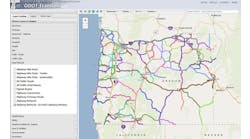Without fanfare or ceremony, there is a great and profound change beginning to take form in the concrete pavement industry. It is not by accident or coincidence that these things are occurring, but instead, the result of great foresight, planning and execution.
What is this profound change? It is the development and implementation of software programs (See Soft spoken, p 24) and other resources that offer a significantly higher degree of standardization in pavement design and construction.
The change can already be seen in many different forms, notably the Mechanistic-Empirical Pavement Design Guide (M-E PDG), which after many years has moved from the conceptual stages to its present stages of implementation. The M-E PDG holds great promise in helping highway pavement designers make decisions based on years of data development, testing and validation that went into this program.
In a similar vein, the American Concrete Pavement Association’s (ACPA) StreetPave software program also offers features that make pavement selection more objective, while also allowing a higher degree of pavement optimization, both in highway and roadway applications.
On the airfield pavement side, ACPA is currently updating its AirPave software program, once again providing features and benefits to help airfield pavement designers produce more efficient pavements as well.
A host of other resources in the planning stages also will factor into this change. Among them are a research track involving industry, academia and the public sector, all working together to develop a uniform concrete pavement mix design. Separately, but equally exciting, is an initiative aimed at developing a catalog of design features, again with the objective of optimizing concrete design and construction.
If there is a common thread that weaves all of these things together, it is the elimination of a great deal of guesswork or subjectivity in pavement design and construction. Naturally, some people will probably wonder whether this runs the risk of taking away some of the creativity or otherwise limiting designers. From our vantage point, the answer is absolutely not. It simply changes the focus from weighing factors that can be influenced by a great number of variables, including individual perception or bias.
In very practical terms, these tools will allow agencies and roadbuilders to design and build with greater confidence, knowing that the underpinnings of their decisions will be resources that draw on vast experience and expertise, and in some cases best practices from every quarter of the transportation construction community.
Although this change is coming without much fanfare or ceremony, it is dramatic, exciting and significant. Equally important is the fact that all stakeholders will benefit from this change. Industry and public agencies will benefit from lower costs, faster construction and all the benefits associated with pavement optimization. The ultimate beneficiary will be taxpayers and the traveling public as a whole. The reason is that this change offers a great opportunity to create the most durable, cost-efficient and safe pavements ever designed and placed.
In the current economic climate, or at any time, providing the greatest value to our customers is simply the right thing to do.
